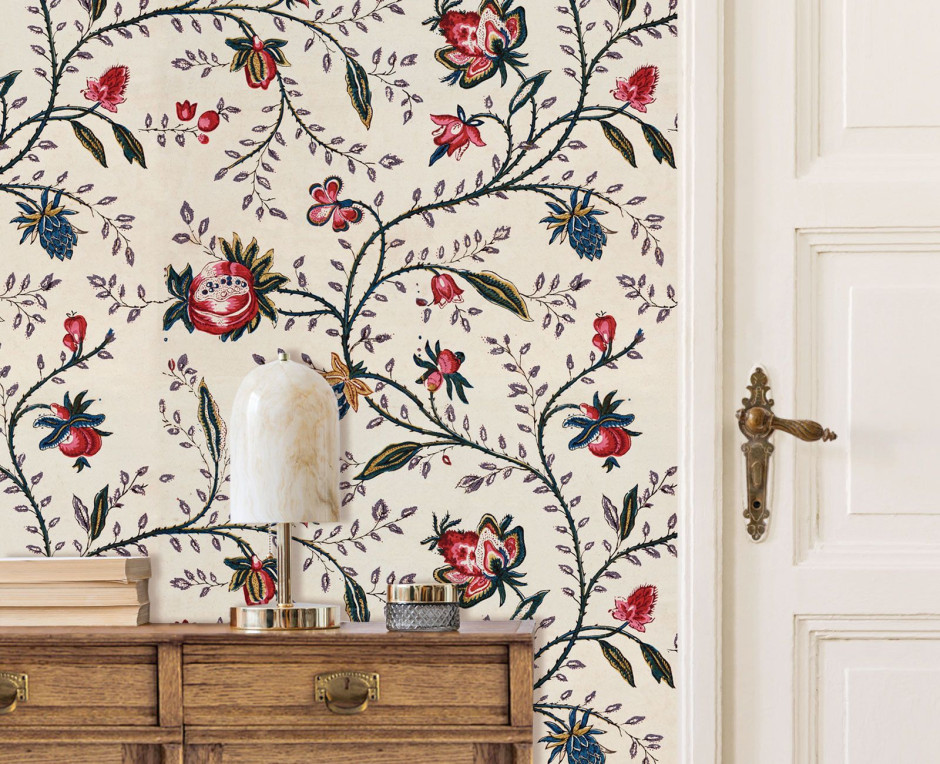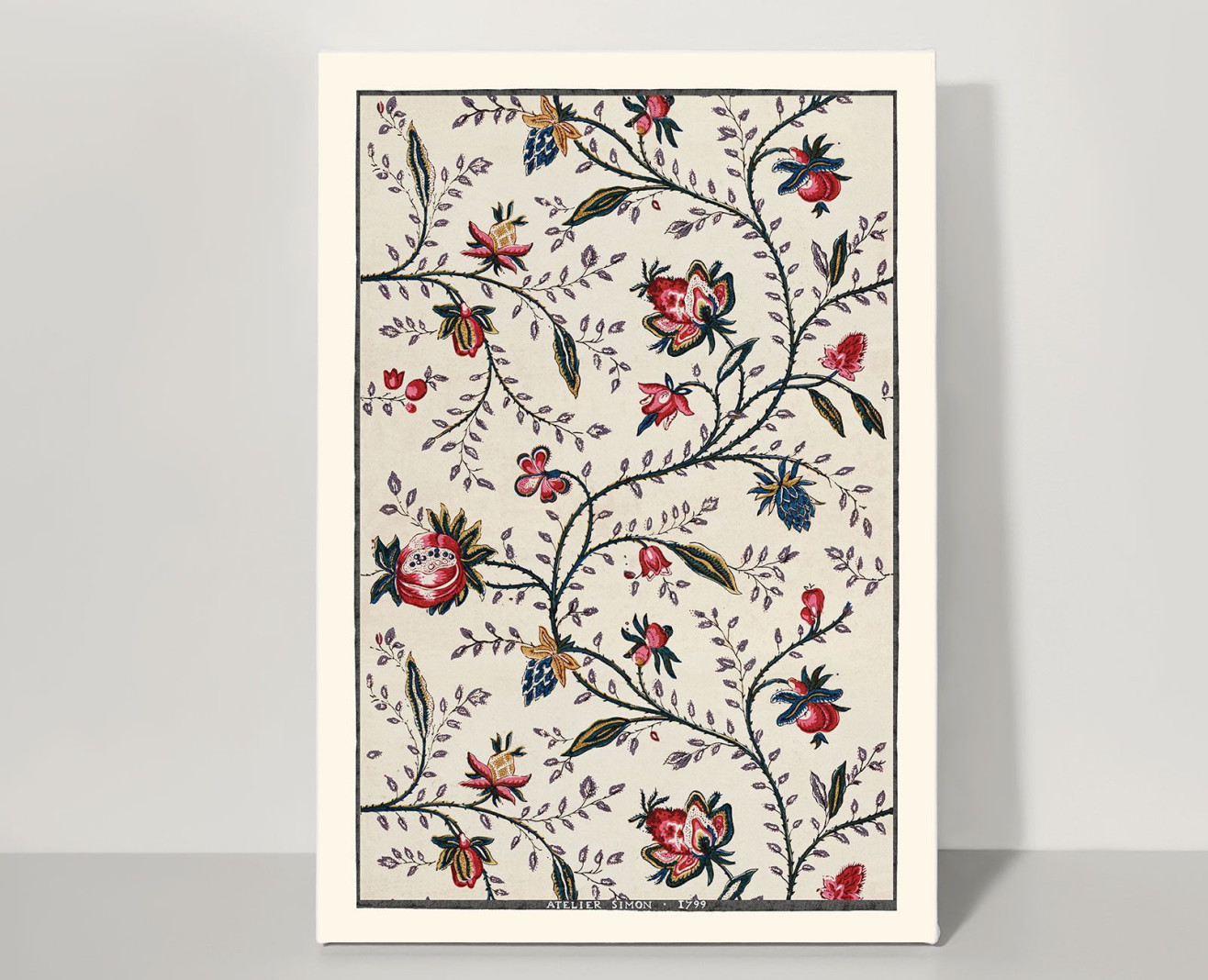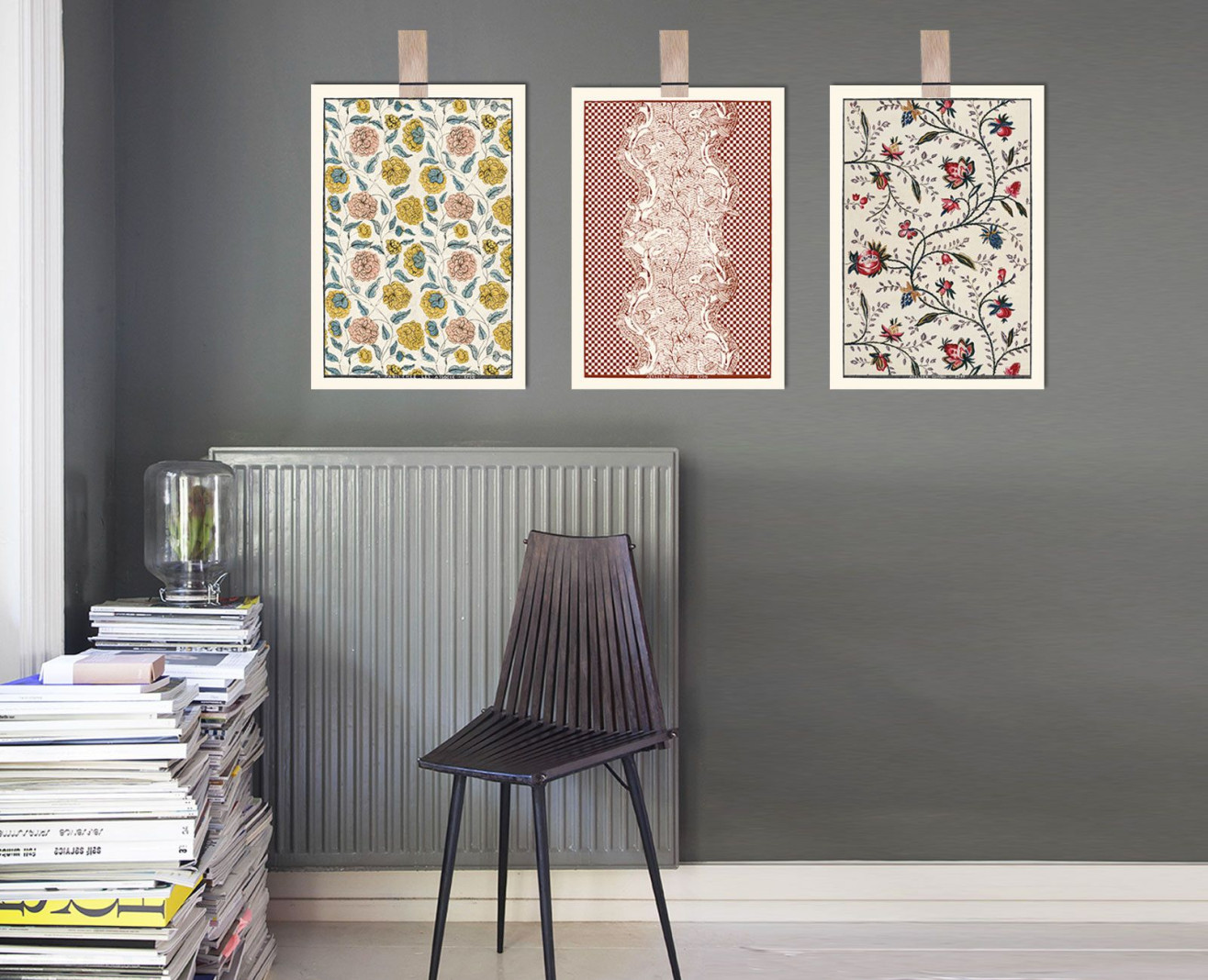No products
- LA PREMIUM finish ideal for walls, kitchen and bathroom
- L’EXTRA finish ideal for woodwork
You still have to place an order for additional boards
(boards are only sold by 3)
Wallpaper Indians . 1799
Manufacturer Simon
115,00 €
Made by the Simon Workshop in 1799, this design represents sinuous branches, fruits and fancy flowers, in a style reminiscent of Indian cotton, a very fashionable fabric in the 18th century. This design is not strictly speaking domino paper, but rather « domino style » because its original size was larger than the traditional sheet of 36X45cm. The original design was printed by means of engraved woodblocks in 6 colors, on paper rolls bound together.
To give life and modernity to this beautiful wallpaper from the end of the 18th century, our workshop carried out a meticulous digital restoration.
Collection of la Bibliothèque Nationale de France
MORE INFORMATION ABOUT LEAD TIMES, click here
Established rue Saint Martin in Paris in 1788, the Manufacture Simon seems to be active until the middle of the 19th century. It produced rich papers enhanced with gold and bright colors. Its velvety wallpapers most often imitate fabrics and architectural elements. Building on its success in France, the manufacture also developed its distribution in Europe. During the French Revolution, it was one, like Jacquemart & Bénard, who knew how to take advantage of the regime change, by offering "republican style" collections.
1799
On August 13, 1792, Louis XVI, Marie-Antoinette, their children, and Madame Elisabeth, the king's sister, were imprisoned in the Temple prison. The rooms of the royal family were soon decorated with wallpapers made by Manufacturer Simon, who produced the "Indiennes" design. Just before the destruction of the Temple, a few pieces of the paper left on the walls were salvaged and preserved as precious relics by the Countess Héracle de Polignac.
This design represents pomegranates, fruits from a shrub of Asian origin, which got very frequently drawn on Indians-style fabrics and were of a real craze in the 18th century for their exotic style. In the middle of the 17th century, the so-called "Indian" printed cotton fabrics from the Orient enjoyed immense success in Europe and France. Wallpaper manufacturers followed this trend by imitating the iconography of textiles, thus adding birds, exotic fruits and flowers, garlands and trees of life, spread over the paper decorations.
Our wallpapers are hung in 3 stages: the preparation of the wall, its pasting, and the hanging. The strips are hung edge to edge and from left to right in the order indicated on the assembly plan supplied with the rolls. To find out more, consult our Hanging instructions page.
Non-woven wallpaper 147g/ square meter
Matching edge to edge
Manufacturing time: 20 business days
Made in France
Standard size : 1 roll of 65 x 250/350 cm
Owing to the manufacturing process, there could be small variations in colors from one production batch to the next. If possible, avoid buying different parts of the same design several weeks apart.












